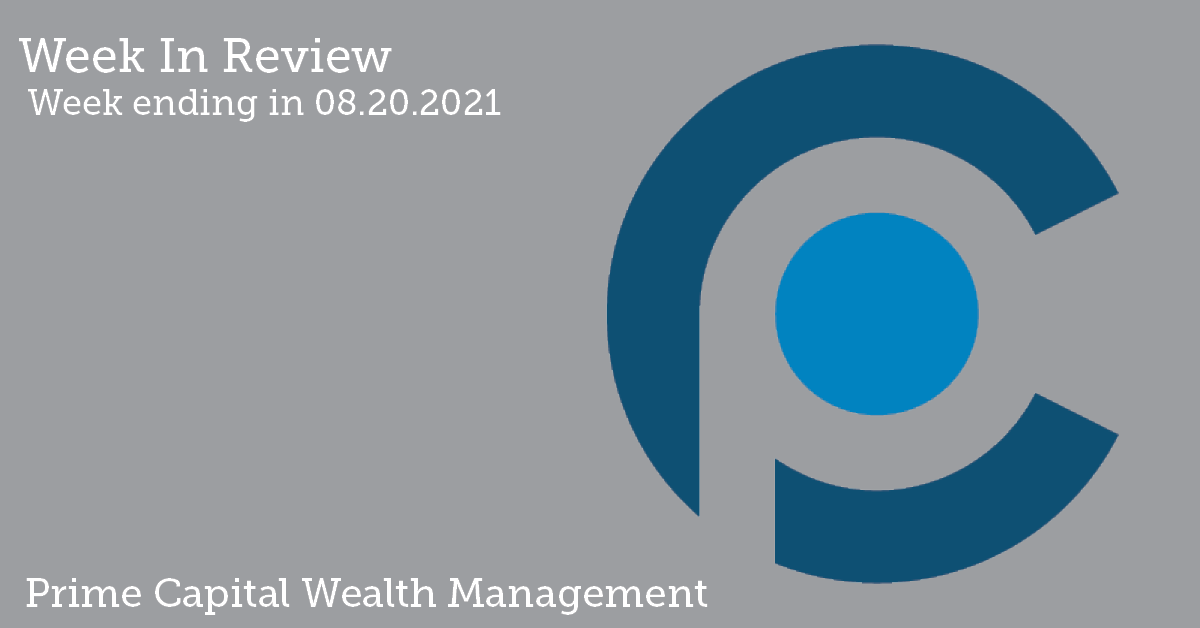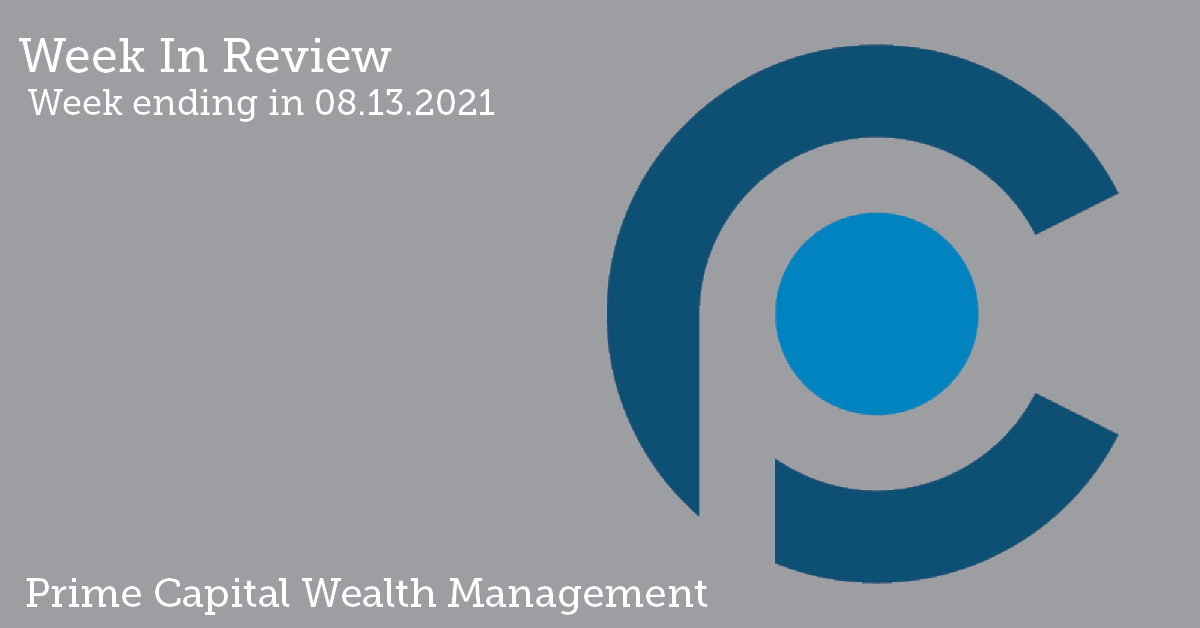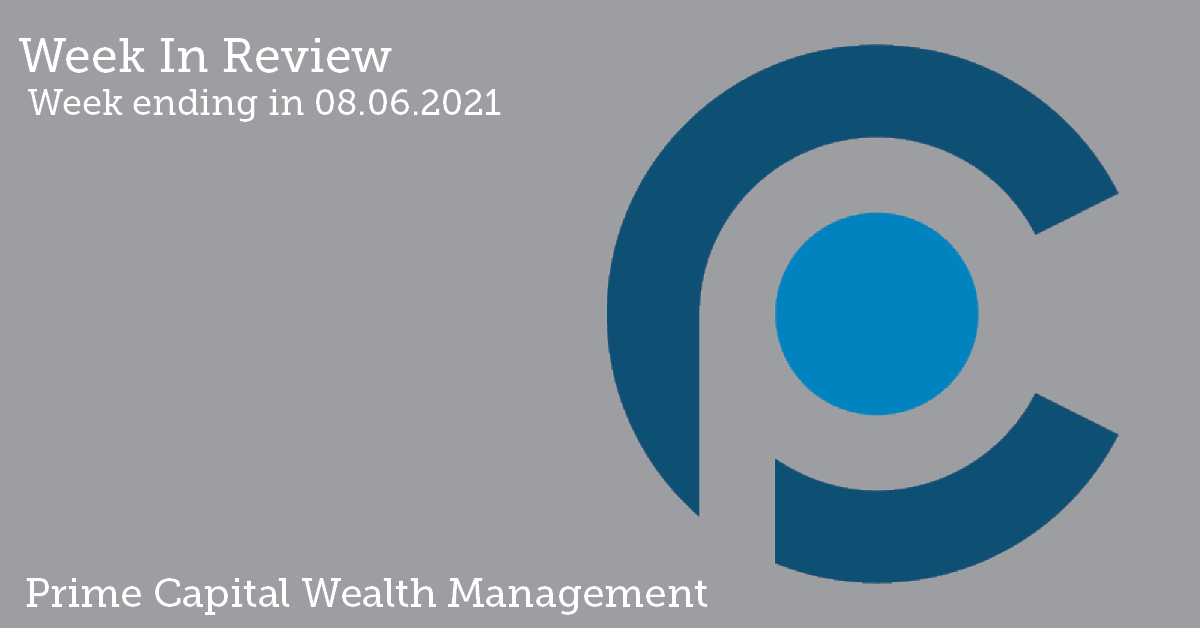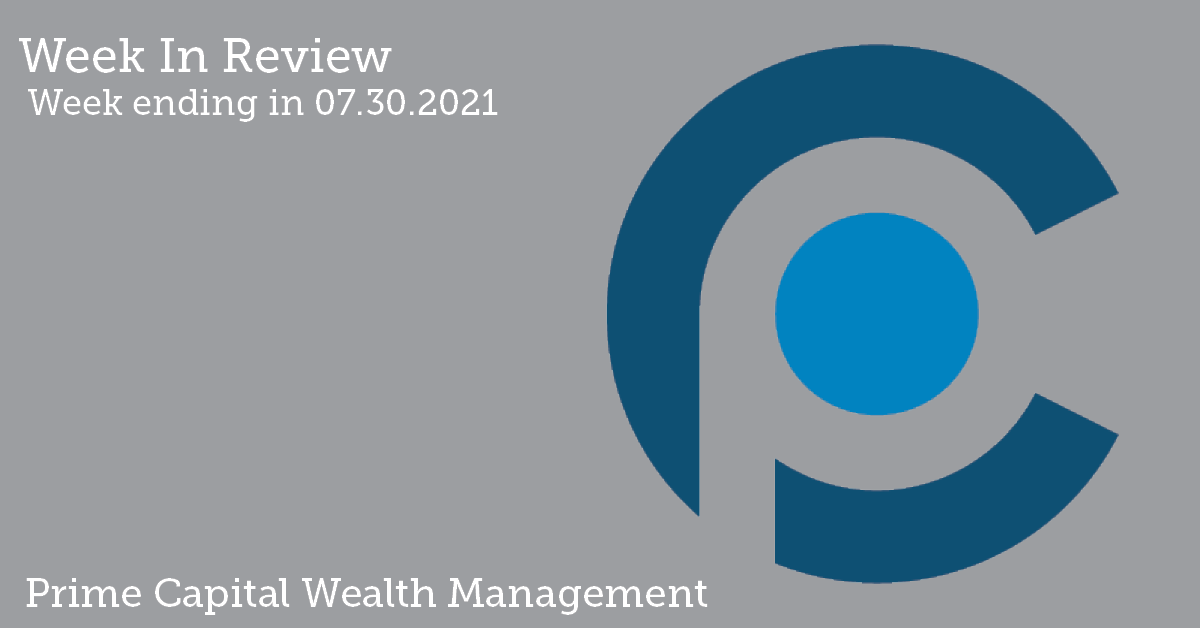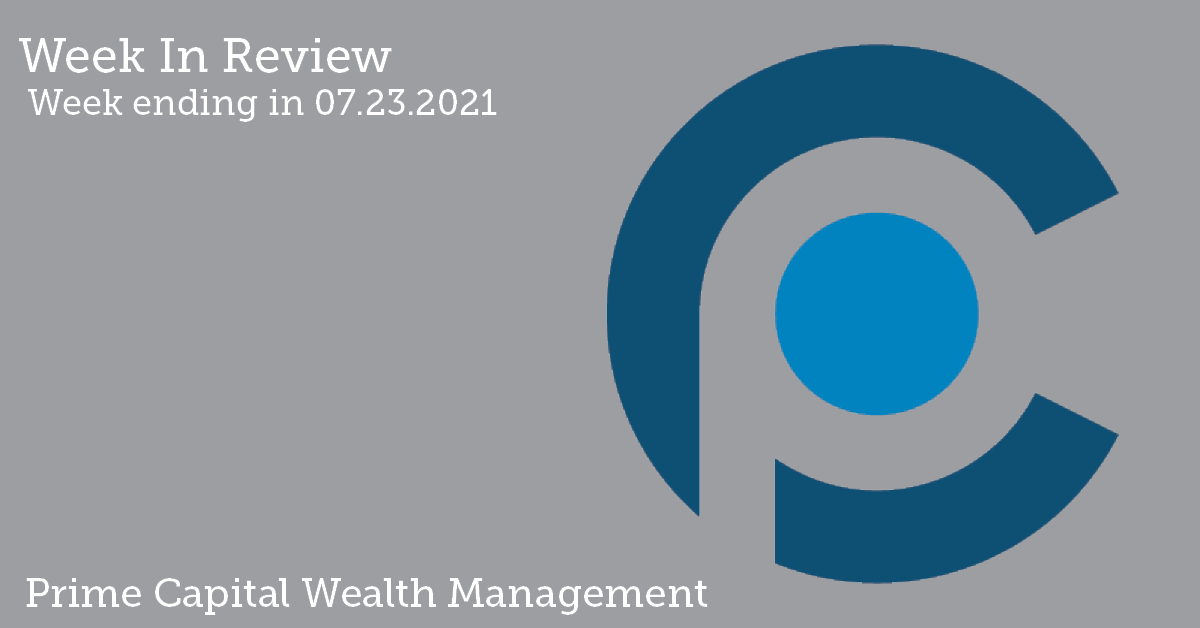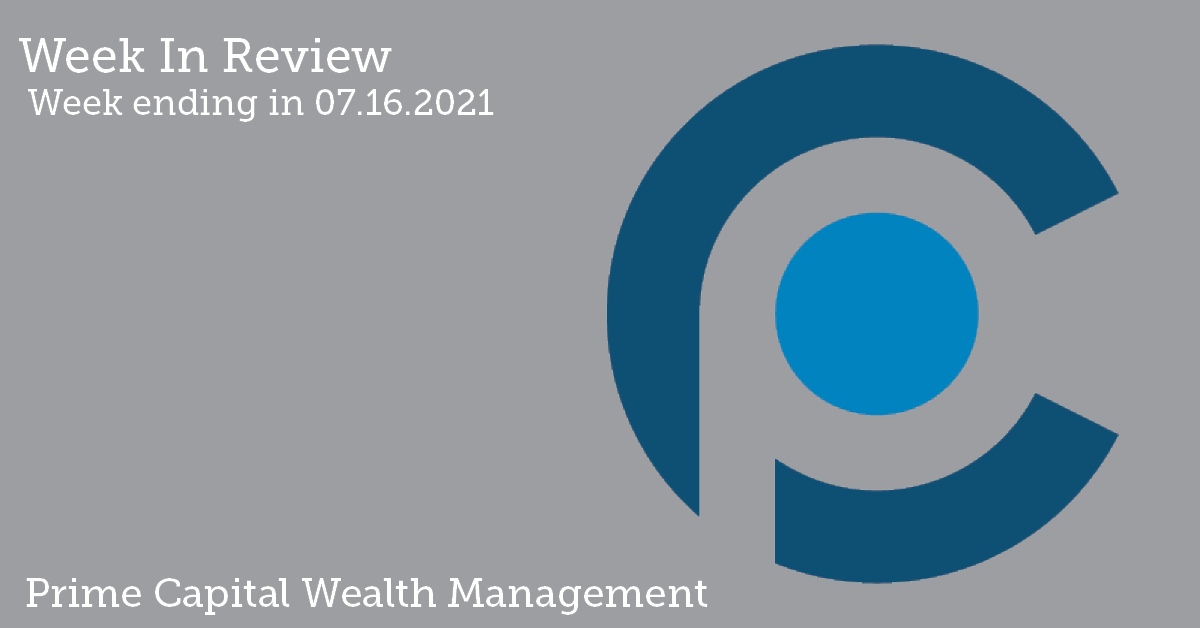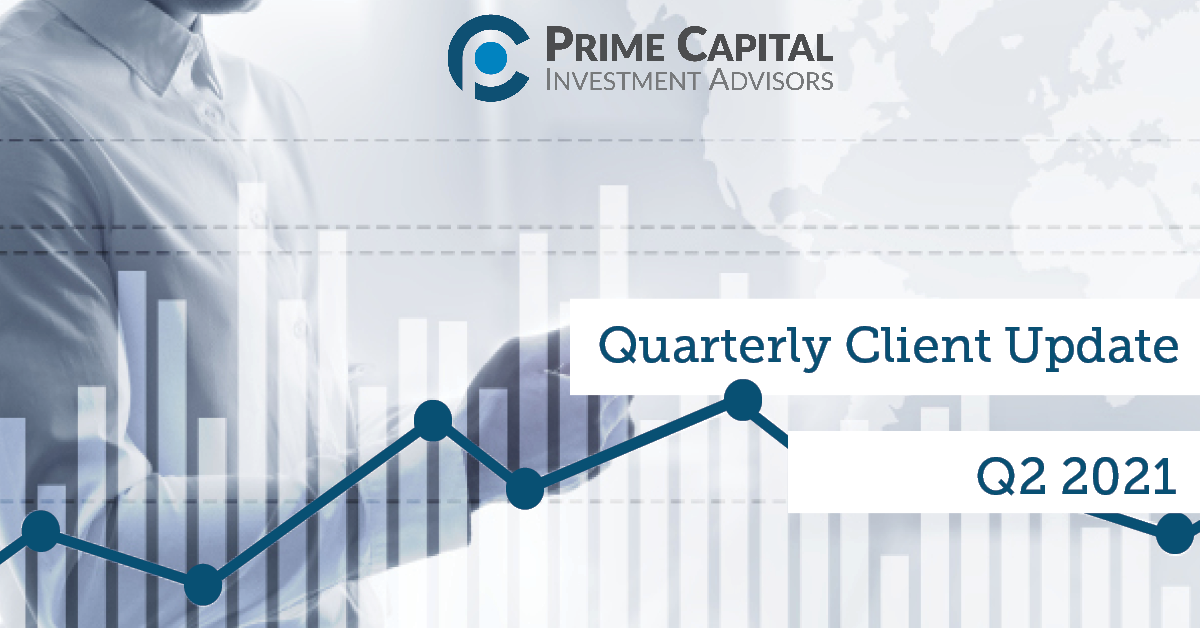The Bottom Line
● The S&P and Nasdaq rose to record levels after Fed Chairman Powell’s comments post Jackson Hole Symposium. Small Cap equities were the biggest winner for the week, gaining +5.05% as investors went risk on.
● Treasury yields were volatile leading up to Powell’s comments but settled after his dovish tone. The 2-year yield dropped -1 bps, but the 10-year yield climbed +5 bps higher for the week.
● Economic news for the week illustrated that supply constraints haven’t abated with orders of goods still outpacing shipments and inflation and delta variant spread is still weighing on consumers’ minds.
Powell Soothes Markets
Investors were able to breathe a sigh of relief after Fed Chairman Powell’s dovish comments on Fed policy moving forward. Markets were mainly concerned over the tapering of asset purchases leading directly into a rate hike. Powell quelled these fears by clearly stating that tapering did not mean hiking. Rejuvenated by this reassurance, traders resumed a risk on mode sending the S&P and Nasdaq to record highs, the S&P ended the week up +1.52% and the Nasdaq was up +2.82%. The S&P is now at a healthy +20.06%return for 2021 thus far and the Nasdaq isn’t far behind at + 17.39% YTD. Small Cap equities were the dominant index for the week, up a whopping +5.05% for the week and + 15.31% YTD. Powell’s comments were heard far and wide with international indexes rising as well. The STOXX Europe 600 gained +0.76% for the week and is now up +18.37% for the year. Troubled Japanese equities were able to catch a bid and returned to positive territory for the year, up +2.32% for the week and now up +0.72% YTD. Yields were ripe with speculation over the Fed’s policy and its effect on the economic recovery, but ultimately, the short end of the curve fell -1 bps and the 10-year yield rose +5 bps.
Digits & Did You Knows
MONTHLY BENEFIT — 54 million Americans receive monthly Social Security retirement benefits, including retired workers, dependents of retired workers, and survivors of deceased workers. 42 million Americans receive monthly assistance from the Supplemental Nutrition Assistance Program (SNAP), aka “food stamps”. (source: SNAP, BTN Research).
AFGHANISTAN — The United States spent $2.26 trillion during its 20-year presence in Afghanistan in fighting the Taliban, rebuilding the Afghan government, and training the Afghan military. (source: Brown University, BTN Research).
SKIP THE PUMP — There are 43,600 electric vehicle (EV) charging stations in the USA. The $1.2 trillion infrastructure bill passed by the Senate allocates $7.5 billion for additional charging stations.(source: DOE, BTN Research).

Click here to see the full review.
—
Source: Bloomberg. Asset‐class performance is presented by using market returns from an exchange‐traded fund (ETF) proxy that best represents its respective broad asset class. Returns shown are net of fund fees for and do not necessarily represent performance of specific mutual funds and/or exchange‐traded funds recommended by the Prime Capital Investment Advisors. The performance of those funds may be substantially different than the performance of the broad asset classes and to proxy ETFs represented here. U.S. Bonds (iShares Core U.S. Aggregate Bond ETF); High‐YieldBond(iShares iBoxx $ High Yield Corporate Bond ETF); Intl Bonds (SPDR® Bloomberg Barclays International Corporate Bond ETF); Large Growth (iShares Russell 1000 Growth ETF); Large Value (iShares Russell 1000 ValueETF);MidGrowth(iSharesRussell Mid‐CapGrowthETF);MidValue (iSharesRussell Mid‐Cap Value ETF); Small Growth (iShares Russell 2000 Growth ETF); Small Value (iShares Russell 2000 Value ETF); Intl Equity (iShares MSCI EAFE ETF); Emg Markets (iShares MSCI Emerging Markets ETF); and Real Estate (iShares U.S. Real Estate ETF). The return displayed as “Allocation” is a weighted average of the ETF proxies shown as represented by: 30% U.S. Bonds, 5% International Bonds, 5% High Yield Bonds, 10% Large Growth, 10% Large Value, 4% Mid Growth, 4%Mid Value, 2% Small Growth, 2% Small Value, 18% International Stock, 7% Emerging Markets, 3% Real Estate.
Advisory services offered through Prime Capital Investment Advisors, LLC. (“PCIA”), a Registered Investment Adviser. PCIA doing business as Prime Capital Wealth Management (“PCWM”) and Qualified Plan Advisors (“QPA”).
© 2021 Prime Capital Investment Advisors, 6201 College Blvd., 7th Floor, Overland Park, KS 66211.



